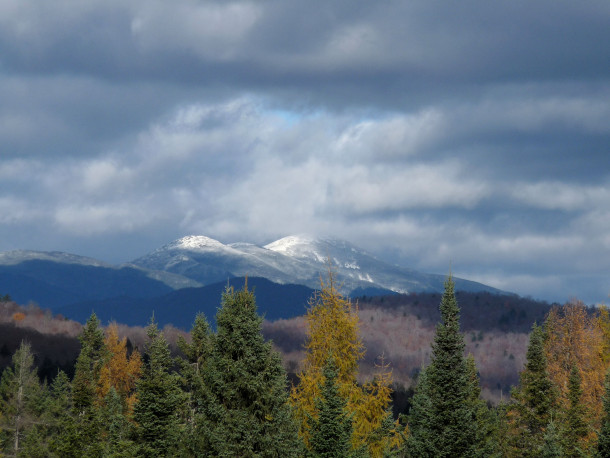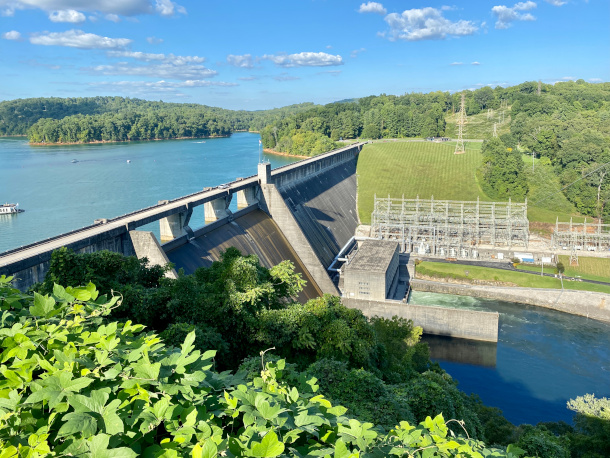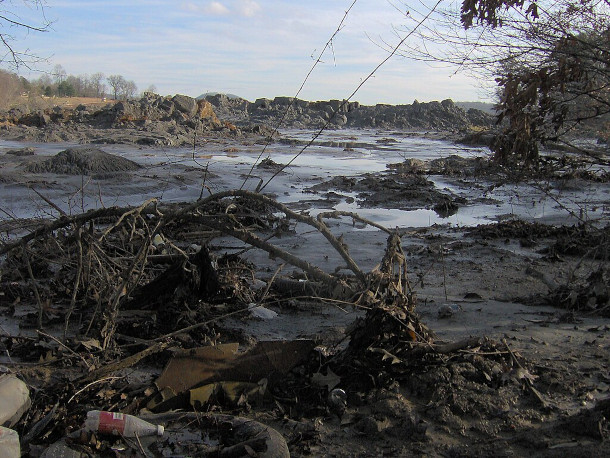From the History Books
Air Date: Week of May 17, 2024

The mesmerizing high peaks of the Adirondack Preserve. (Photo: John Munt, Flickr, CC BY-NC 2.0)
Living on Earth contributor Peter Dykstra joins Host Aynsley O’Neill for a trip back in time to the creation of the Adirondack Forest Preserve, as well to Franklin Delano Roosevelt’s signing of the Tennessee Valley Authority Act.
Transcript
O’NEILL: It’s the time in our show where we get Peter Dykstra on the line from Atlanta, Georgia. He’s the Living on Earth contributor who’s gonna bring us a couple of stories from the history books. Hey, Peter, whatcha got for me this week?
DYKSTRA: Hi, Aynsley, we're gonna go way back to 1885, specifically, May 15, 1885, when the state legislature and the governor of the state of New York created the Adirondack Forest Preserve, a huge area of 681,000 acres. And they did it out of enlightened self interest. They were concerned that New York City's water supply would be threatened if the Adirondacks were continued to be clear cut, so they set this huge area of state off limits.
O'NEILL: Well, providing New York City clean drinking water is so important. Not only do they provide something like 1 billion gallons of clean water to all the city's residents every single day, but New Yorkers will also say it's the reason why their pizza and bagels are so good. And Peter, with you and me both from northern New Jersey, we get to reap some of those benefits.
DYKSTRA: Oh, no, absolutely. We both grew up in the New York area. And without that high quality H2O in New York City, it would be "fuhgeddaboudit" for one of the largest cities in the world.
O'NEILL: Alright, Peter. But the tangent aside, tell me more about the Adirondacks.
DYKSTRA: Not only was there development pressure to build new farms, new large resort hotels, but Adirondack Park remains largely protected today, despite all those development pressures. And despite the damage done in the past century from acid rain. But there were so many other preservation areas since Adirondack Park being arguably the first in the U.S.: the Grand Canyon, Yosemite, the Cape Cod National Seashore, and many others. There was initially huge opposition to setting these areas off limits. That opposition was conquered. The Adirondack Forest Preserve led the way.
O'NEILL: Mmhmm. Alright, Peter, what else do you have for me?

As the Tennessee Valley Authority's inaugural venture into flood control and hydroelectric power production, the Norris Dam was constructed between 1933 to 1936 spanning from the Clinch River from Campbell County to Anderson County in Tennessee. (Photo: Warren LeMay, Flickr, CC BY-SA 2.0)
DYKSTRA: Two months after his inauguration, Franklin Delano Roosevelt signed the Tennessee Valley Authority Act. President Roosevelt helped create the TVA largely to make the Tennessee River navigable, and also to bring electricity and jobs to the impoverished region. TVA becomes one of the nation's largest operators of coal and nuclear power plants. So it hasn't always held an environmental value at the highest level.
O'NEILL: And Peter, the TVA is still kicking today, right?
DYKSTRA: The TVA is still there, it's still a political behemoth throughout the region of all of the states in the Southeast except for Florida. And that political powerhouse is not always working in conjunction with environmental values. You may remember about 10 years ago, in Kingston, Tennessee, there was a huge coal ash spill that polluted a large section of the Tennessee River tributary. The TVA has always needed to get a little extra push in working toward keeping the Tennessee River and its environments clean. It hopefully is going to do a better job in the future.

The aftermath of the Tennessee Valley Authority's Kingston Fossil Plant retention pond breach near Harriman, Tennessee, revealing a vista of the ash spill across an inlet that flows into the Emory River. The scene, approximately one mile downstream from the failure site, showcases the environmental impact in the southeastern United States. (Photo: Brian Stansberry, Wikimedia Commons, CC BY 3.0)
O'NEILL: Alright, Peter, well thank you for bringing us these stories. Peter Dykstra is a Living on Earth contributor, and we will talk to you again real soon.
DYKSTRA: Aynsley, thanks a lot. We'll talk to you soon.
O'NEILL: And there's more on these stories on the Living on Earth website. That's L-O-E dot O-R-G.
Links
Living on Earth wants to hear from you!
Living on Earth
62 Calef Highway, Suite 212
Lee, NH 03861
Telephone: 617-287-4121
E-mail: comments@loe.org
Newsletter [Click here]
Donate to Living on Earth!
Living on Earth is an independent media program and relies entirely on contributions from listeners and institutions supporting public service. Please donate now to preserve an independent environmental voice.
NewsletterLiving on Earth offers a weekly delivery of the show's rundown to your mailbox. Sign up for our newsletter today!
 Sailors For The Sea: Be the change you want to sea.
Sailors For The Sea: Be the change you want to sea.
 The Grantham Foundation for the Protection of the Environment: Committed to protecting and improving the health of the global environment.
The Grantham Foundation for the Protection of the Environment: Committed to protecting and improving the health of the global environment.
 Contribute to Living on Earth and receive, as our gift to you, an archival print of one of Mark Seth Lender's extraordinary wildlife photographs. Follow the link to see Mark's current collection of photographs.
Contribute to Living on Earth and receive, as our gift to you, an archival print of one of Mark Seth Lender's extraordinary wildlife photographs. Follow the link to see Mark's current collection of photographs.
 Buy a signed copy of Mark Seth Lender's book Smeagull the Seagull & support Living on Earth
Buy a signed copy of Mark Seth Lender's book Smeagull the Seagull & support Living on Earth

